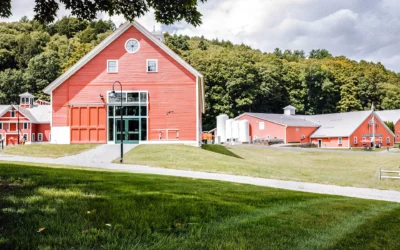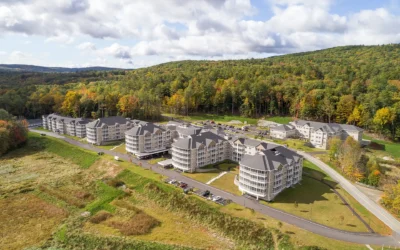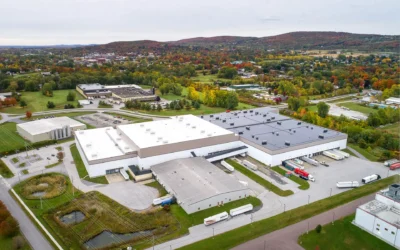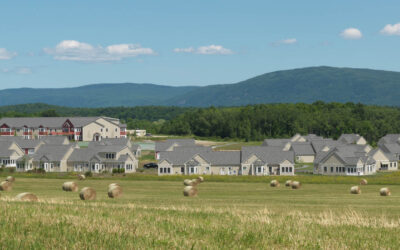
PUTNEY, VT– The Putney School, DEW Construction Corp. and Maclay Architects, cut the ribbon Saturday, October 10th on its 16,800 square foot net-zero energy field house that will produce as much energy as it uses over the course of a year. There are only a handful of net-zero energy buildings in the United States-The Putney School Field House is the nation’s first net-zero energy secondary school building and Vermont’s first commercial net-zero energy building. Of the project’s $6 million budget,$5.1 million was spent on building construction.
“We want to show the world that net-zero energy technology for public buildings exists right now,” says Putney School Director Emily Jones. “It’s time to move net-zero energy buildings from the theoretical realm into reality.”
By definition, net-zero energy buildings generate as much energy as they consume over the course of a year. The energy used is usually produced on-site and comes from renewable energy sources such as wind, solar, geothermal, or biomass. These buildings are designed to minimize the use of natural resources and energy. According to Architect Bill Maclay, whose firm designed The Putney School Field House, such buildings not only protect the environment by minimizing energy use and reducing the need for outside (fossil fuel-based) energy sources, they pay for themselves through improved efficiency and lower operating costs and help avoid the risks associated with fuel price volatility. Over the course of a year, the total energy bill will be zero.
“There are only a handful of net-zero energy buildings in the nation,” says Bill Maclay, president and founder of Maclay Architects. “Our hope is that this will be one of the first of many such buildings. This will show the world that our buildings can-and should-be built to meet much stronger energy standards to not only protect the environment but also to improve an organization’s bottom line.”
The super-insulated, super-energy-efficient building will use the sun for its heating (including passive solar) and electricity needs. Sixteen sun-tracking photovoltaic solar panels will power the building and, in an average year, will enable the building to do better than break even on its energy use. During the winter months the building will draw electricity from the grid. During sunny months, the photovoltaic cells will feed excess energy back into the grid. According to Project Architect Bill Gallup, in addition to paying no energy bill, The Putney School will actually receive 6 cents per kilowatt-hour for electricity fed back (net-metered) into the grid.
“This spacious building will be both a snapshot of sustainable building technology at this point in history and an educational tool for other schools whose curricula include sustainability,” says Putney School CFO Randy Smith.
The Putney School will have real-time energy monitoring data available to the public on their website when the building is certified for occupancy in November 2009.
In addition to being the first net-zero energy secondary school building in the nation, the design team anticipates that the Putney School field house will be one of only five platinum (the highest possible rating) LEED-certified school buildings in the country. LEED, Leadership in Energy and Environmental Design, is the nationally-accepted standard and rating system for high performance (green) buildings developed by the U.S. Green Building Council.






